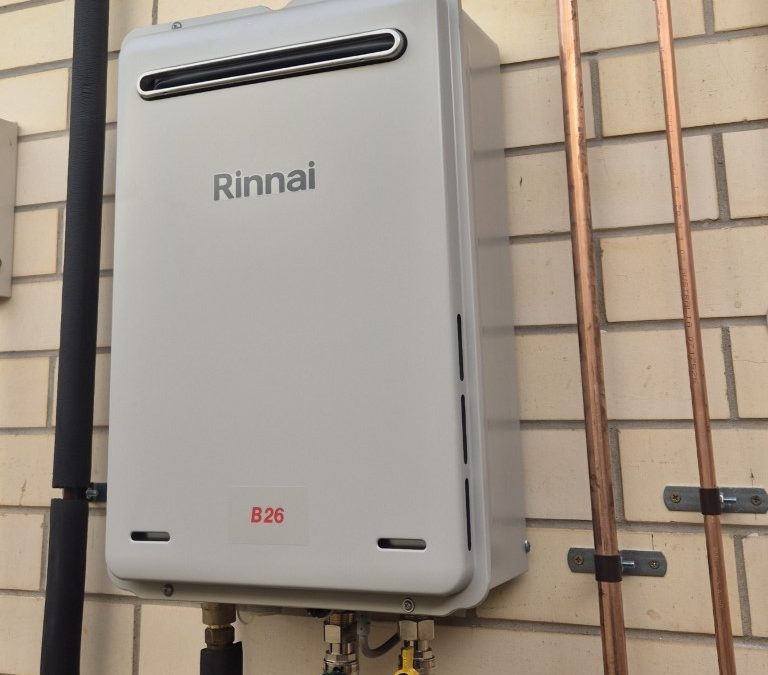There’s still some older houses in Adelaide running low pressure hot water systems. These are usually 3.6kW electric but they can also be gas fired.
Just last week I decommissioned a low pressure gas water heater and installed a Rinnai in Tea Tree Gully on a house that was built in 1970. The house was recently sold and the new owners contacted me before they moved in because they wanted to convert the hot water to mains pressure without delay. If you’ve ever showered with low pressure hot water, you will understand why they were so proactive about it.
This house already had steel gas pipework in the roof supplying gas to a cooktop, a wall furnace, and the water heater. In this case, the job only required extending the three services hot, cold, and gas, to the new water heater from the location of the existing heater.
I always recommend using a temperature control pad with instantaneous water heaters, because dialling in a lower temperature not only causes the heater to use less gas, it also gives you accurate temperature comfort using only the hot tap. These customers were already familiar with continuous flow water heaters and the benefit of the control pad, so they insisted on installing one before I even mentioned it.
A few of the main things needing consideration when converting hot water to instantaneous are as follows;
the availability and location of gas
the need for a power outlet to run the computer controlled water heater
the location of windows and doors in relation to the flue terminal on the heater
the need for unenclosed space in which to run the heater
Note that these considerations also apply to converting from a mains pressure storage water heater to an instantaneous/continuous flow water heater. These four points need some explaining because the technicalities aren’t obvious to the untrained.
The availability of gas sounds obvious because the house either has gas or it doesn’t right? Well the size of the gas pipe is critical, and the longer the pipe is, the larger the diameter needs to be. To make this point slightly more challenging, an instantaneous water heater typically runs at 199mJ/hour, while a storage heater runs at about 40. We use pipe sizing charts to calculate the pipe size required, and it’s a critical detail that cant be overlooked.
The need for a power outlet is the simplest one to understand. These heaters have a standard 10A plug on them. The power they use is only to run a fan for the exhaust gas, and to power the computer that calculates how it should behave.
The next two considerations are practically the same. They are both concerned with keeping people safe from combustion products. We need to be sure that the flue terminal on the heater is pointing away from openings into the building, and far enough away from windows and doors etc so that noxious gas does not enter the dwelling. The flue terminal also needs to be located in an open space with free air movement to prevent the possibility of accumulation of combustion products.
If you have any type of storage hot water, and you want to install instantaneous hot water instead, contact me by sms 0408 115 455 and we can work out a solution that suits your requirements.

